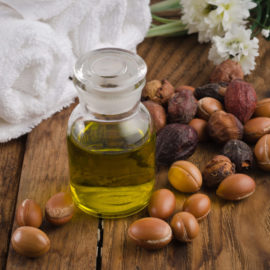An even skin tone that “glows” and looks healthy remains at the top of consumers’ wish lists across the globe. While there are regional nuances in the marketing terms used (eg. whitening, brightening, lightening…), the end goal remains to achieve radiant, healthy-looking skin. The glow trend for skin reclaims a natural, healthy-looking and bright skin for women through the use of organic, natural products. This is in direct contrast with other beauty industry buzzwords such as contouring that promote a more artificial appearance.
The glow trend demonstrates a change in paradigm; instead of an overdone makeup look, consumers are demanding products that provide a natural look for their skin, and they’re basing their purchase decisions on finding natural, transparent and environmentally-conscious brands. Data confirms this: according to NPD, both men’s and women’s skin care markets grew by 5%, reaching $1.4 billion in 2019, while brands that pushed the natural narrative and ingredients accounted for 27% of skincare sales in the first quarter of 2019, growing collectively by 8%. Also, more than 50% of consumers are looking for skin care products that contain organic ingredients, according to the NPD Group’s Women’s Facial Skincare Consumer Report. Research thus demonstrates that, in order to sustain this growth, companies must meet their customers’ demands by embracing the sustainable approach and using natural ingredients to help them achieve natural skin brightening.
The future of natural skin brightening products
Stats show that many skin care companies have already adopted the natural, organic narrative, including plant-based, organic ingredients in their products. In fact, according to figures published by Statista, the purchasing of natural and/or organic cosmetics is continuously growing since 2018, a trend expected to expand well into the next decade.
In the coming years, the health-oriented, feel-good “brightening” term will spread even more across both mainstream and indie brands. This flawless, radiant-looking skin will continue to be a need for consumers in major East Asian markets, driven by culture and hyperpigmentation sensitivities. At the same time, terms such as “whitening” or “lightening” will steadily disappear, as more and more consumers demand a diverse and inclusive beauty industry that accepts all skin colors.
Social responsibility for brands will be key in growing; according to a report by Accenture, 52% of consumers are attracted to buy a product if the brand stands for something bigger than just the products and services it sells, which in turn also aligns with their personal values.
When it comes to natural skin brightening, Melavoid stands as the perfect active ingredient that matches the current socially responsible culture and embraces the natural lifestyle, while providing an effective treatment to pigmentation concerns.
Currently, hyperpigmentation affects millions of people all over the world. It’s been recorded as the third greatest cosmetic concern, being perceived as an evident sign of the decline of youth. Melavoid is an active lightening ingredient that acts on the initial mechanisms of pigmentation, reducing melanogenic activity and causing a decrease in tone and skin spots.
Melavoid comes from the actives present at the root of the Boerhaavia diffusa, a perennial herbaceous climbing plant native to India. For centuries, the plant has been used for therapeutic purposes, and is part of the traditional Ayurveda medicine. Rich in diverse components, it’s the boeravinone in its roots that has been identified as a key mechanism in skin pigmentation modulation.
An in vivo study took place, in which Melavoid was tested in 20 Asian participants to evaluate its efficacy as a cosmetic ingredient designed to reduce cutaneous pigmentation. The visible results included a decrease in skin tone in a uniform, homogeneous fashion and a reduction in the number of spots (such as surface spots, UV spots, and brown spots).
In fact, the reduction of melanin can help ease the consequences of hyperpigmentation. This condition means the body generates too much melanin, both to protect itself against aggressions and as part of an aging process, creating melanin accumulations that cause spots or changes in skin tone.
This active ingredient acts before, during and after the process of melanin synthesis, providing an overall result of a healthy-looking skin that glows and has an even tone. Its plant-based origin and link to traditional medicine will, on the other hand, cater to new market sensibilities, looking for natural solutions for skin care products.
No comments yet
There are no comments on this post yet.





Leave a comment